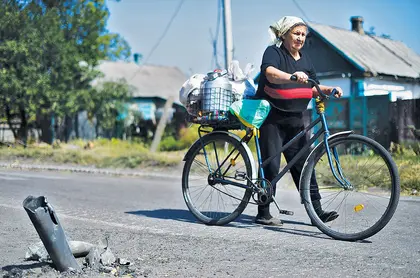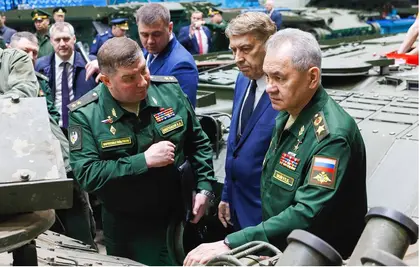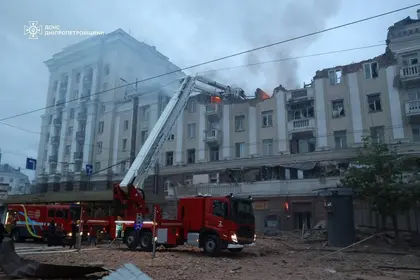As Ukraine prepares to mark in late August the fourth anniversary of the Battle of Ilovaisk, the bloodiest episode of Russia’s war against Ukraine, the United Nations Human Rights Monitoring Mission in Ukraine has issued the first-ever estimate of the civilian death toll from the fighting in the battle.
At least 36 civilians, including 18 men and 18 women, were killed in and around Ilovaisk in August 2014, according to a UN report presented on Aug. 9.
The report says that 11 residents were killed in the period from Aug. 7 to Aug. 18, when Ilovaisk was completely under the control of Russian-led forces, while 25 more residents were killed between Aug. 19–28, when control of the town was split between Ukrainian troops and Russian-led fighters.
Another five civilians were killed from Aug. 27 to Aug. 29 between the towns of Komsomolske and Osykove. At that point, Ukraine’s soldiers were retreating from Ilovaisk under shelling attack by Russian regular army forces.
Without giving an overall total of the wounded, the UN said 83 civilians were injured in Ilovaisk on Aug. 7, when the town suffered a massive shelling attack. At least 20 civilians were permanently disabled as a result of injuries they received during the fighting, the UN report said.
“When there’s an increase of shelling it’s the civilians who pay the highest price. And we see this here,” Fiona Frazer, the head of the UN Human Rights Monitoring Mission in Ukraine, told the Kyiv Post in an interview.
Crucial battle
Ilovaisk, a formerly obscure town in Donetsk Oblast some 620 kilometers southeast of Kyiv, which had a pre-war population of 16,000 people, became the epicenter of a crucial battle due to it being the location of a strategic railway junction. The battle for the town, which saw Russia send regular troops into Ukraine to aid its proxy forces in the country, changed the course of the war.
The town was to have been the jumping-off point from which Ukrainian army units and volunteer battalions would have started the liberation of the city of Donetsk, the provincial capital, and a stronghold of Russian-led forces. But the Ukrainian military’s poor organization of the operation and the direct involvement of Russian regular troops in the conflict led to a catastrophic defeat for Ukraine, with 366 Ukrainian soldiers being killed there according to the official count.
UN representatives, having conducted more than 80 interviews with casualties and witnesses of the fighting in Ilovaisk, estimate that the official number is close to real. But the UN found the estimates of the Memory Book, a citizen volunteer project that collects information about Ukrainian soldiers killed in battle, which recorded the deaths of around 700 Ukrainian soldiers in the Donbas in August 2014, were closer to its own count.
“There are no hidden thousands of killed,” said Uladzimir Shcherbau, the UN human rights officer who prepared the report.
Daily shelling
From early August 2014, Ilovaisk was shelled every day, so the up to 13,000 civilians who lived in the city at the time had to take shelter at the local school, kindergarten, community center and railway station. From mid-August, the town had no water, gas, or electricity supplies. All of its residential houses were damaged. Moreover, 200 residents of the village of Hrabske, located near Ilovaisk, had to seek refuge from the shelling in a nearby monastery.
After the hospital in Ilovaisk was bombed early on Aug. 8, the residents had to go for medical help to local doctors’ and nurses’ homes, or seek help from military doctors.
Killed and tortured
While in most cases the Ukrainian soldiers positioned in the town tried to help the civilians, the UN report cited at least five cases in which civilians were killed by soldiers, or in which soldiers caused civilian deaths.
After Ukrainian forces withdrew from Ilovaisk in late August, the residents found a grave containing the bodies of three people in the yard of school No. 14, where the Donbas Ukrainian volunteer battalion had been based.
Identifying bodies
One of them was a local man, Valentyn Minich, who stayed to look after his house after his wife left the city. Fighters from the Donbas Battalion accused Minich of helping Russian-led troops target Ukrainian positions in the city, and first tortured and then executed him, the UN report said.
Another man was Ihor Trufanov, who had been hiding with his wife in the basement of the railway depot when soldiers of Donbas and Dnipro volunteer battalions detained him. Trufanov was also accused of helping the Russian-led forces when Ukrainian soldiers found that he was carrying a cell phone. His body was found in a mass grave with bullet wounds in his stomach and chest.
The third body found in the grave was that of Serhiy Myronenko, who was detained at a Ukrainian checkpoint and brought to school No. 14 for interrogation. He was killed in a shelling attack while he was detained in the school.
Two Ukrainians volunteer soldiers were also killed in the same shelling attack.
Two other civilians killed in Ilovaisk were Luidmyla Horbenko and Valeriy Kolesnichenko, a couple who were hiding from shelling in a house located next to the railway line — the area where the fighting was most intense. Neighbors who found the bodies said the couple had been shot dead but that their bodies also bore signs of torture.
The neighbors said they didn’t know who had killed Horbenko and Kolesnichenko. Since the victims’ house is located in an area that was held by first one side and then the other, the UN wasn’t able to determine which side was responsible for their deaths.
Search for the guilty
The UN said the executions of civilians in Ilovaisk were “not massive or systematic,” and that only two cases were definitely attributed to Ukrainian soldiers.
“(The killings were) committed in the context of the battalions being involved in fighting, and killing two civilians whom they probably believed were enemies,” Shcherbau said. “But that doesn’t reduce the (seriousness) of this act.”
He added that it would never be too late for the Ukrainian government to start investigating these cases. Frazer added that any future peace process would require Ukraine to face the truth about such crimes.
“The issue of accountability is very important when you look further down the line to peace and reconciliation,” she said.
Soldiers who fought in Ilovaisk admitted in interviews to the Kyiv Post that the Russian-back fighters and civilians suspected of helping the Russians had been imprisoned in part of school No. 14.
The UN report said that at times up to 20 people were kept in a small room in the school. However, when the Ukrainian soldiers were leaving Ilovaisk they released all of the captive civilians.
Russian crimes
The UN also reported that three Ukrainian soldiers were probably killed by a Russian army lieutenant early on Aug. 29 after they were taken as prisoners. However, as the report was based solely on the testimony of other soldiers who were also taken prisoner but survived, the report records the deaths only as probable killings.
The report also indicated that the Russian forces likely finished off several wounded Ukrainian soldiers lying in a field near the village of Novokaterynivka. One Ukrainian military doctor was also reportedly abducted by the Russian forces in the village of Chervonosilske on Aug. 30. The Russians drove him away and he has been never seen again, the report said.
Several Ukrainian soldiers also told UN representatives in an interview that Russian regular army soldiers tortured them after capturing them, including by beating them and depriving them of drinking water.
Four Ukrainian soldiers died from wounds after being captured by Russian forces because they were not given the necessary medical help, the UN report said.
False denials
The Battle of Ilovaisk was the first known case of Russian regular troops being directly involved in the fighting in Ukraine, with the war then seen in Ukraine and abroad not to be a “civil war” but an international conflict between Ukraine and Russia.
While more than a dozen Russian soldiers were captured in the fighting, hundreds of Ukrainian soldiers said they had also spoken to Russian soldiers, recognizing their Russian military uniforms and Russian armored vehicles.
Journalists in Russia have found dozens of graves of Russian soldiers, with the dates of their deaths coinciding with the period in which the Battle of Ilovaisk was being fought.
An anonymous open data investigator, who goes by the name of Askai707 on the Internet, has also collected complete personal data on Russian soldiers who fought at Ilovaisk, proving that at least 26 Russian regular troops were killed there.
Nevertheless, the UN report fails to directly name Russia as a side in the war. It only notes Ukraine’s official claim that Russia sent troops into Ukraine, and Russia’s official denials — even though there is overwhelming evidence that the Kremlin’s denials are false.
“Our work is based on our findings from the human rights perspective. We acknowledge the official views of both Ukraine and the Russian Federation,” Frazer said.
You can also highlight the text and press Ctrl + Enter







Comments (0)